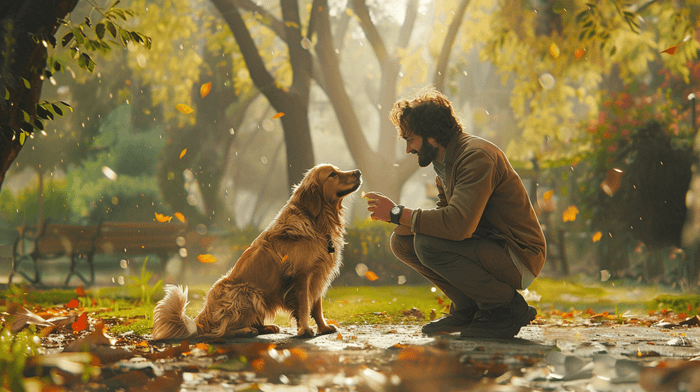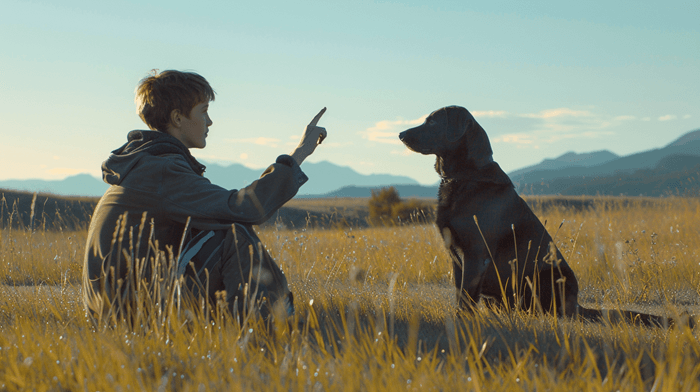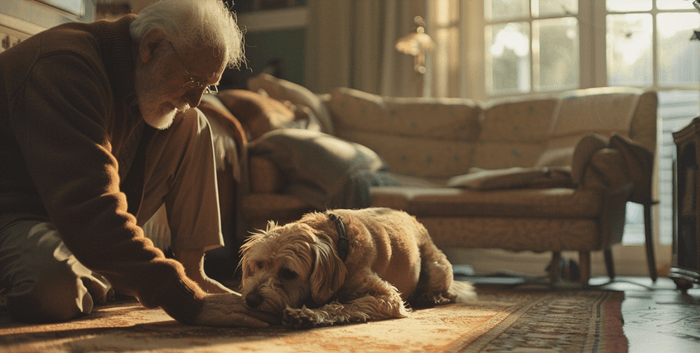
Dog training has evolved significantly over the past few decades. While punishment-based methods were once considered necessary for correcting undesirable behaviors, we now know that positive reinforcement training is far more effective and respectful of the dog’s well-being. Training your dog without punishment is not only possible, but it’s also highly beneficial for creating a stronger, healthier bond with your pet.
Positive reinforcement dog training is all about rewarding good behavior rather than punishing bad behavior. This not only helps your dog learn faster but also reduces stress and anxiety for both the dog and the owner. Additionally, it fosters a relationship based on trust and mutual respect.
If you’ve ever wondered how to train your dog without relying on physical corrections or verbal punishment, this article is for you. We’ll explore the reasons behind the success of positive reinforcement training, the most effective techniques, and how you can apply them in daily life to improve your relationship with your dog. Training your dog with love and respect is not only possible but is also the best way to build a lasting and strong bond.
The Benefits of Positive Reinforcement Training

1. Strengthens the Bond Between Dog and Owner
Positive reinforcement is based on rewarding your dog when they do something right. By doing this, your dog associates the correct behavior with positive experiences, creating a relationship of trust and respect. Instead of fearing their owner, the dog will be motivated to learn and please.
When a dog knows that good behavior leads to praise, treats, or playtime, they are more likely to continue learning. This creates a happier and stronger relationship between owner and dog, which in turn makes training and daily life easier.
2. Reduces Stress and Anxiety
Traditional training methods, which often involve physical or verbal punishment, can cause high levels of stress and anxiety in dogs. This can lead to unpredictable behavior and strained relationships between the dog and the owner.
Positive reinforcement, on the other hand, reduces stress by creating an environment where the dog feels safe and motivated. Dogs respond better when they feel calm and secure, making learning much easier. A relaxed dog is more open to learning and following instructions.
3. Improves Communication and Understanding
Positive reinforcement teaches dogs to understand what is expected of them through clear and consistent cues. By rewarding desired behaviors, dogs learn to associate certain actions with positive outcomes. This improves communication between dog and owner as the dog can more easily understand what is being asked of them.
Instead of focusing on what they shouldn’t do, positive reinforcement emphasizes what they should do, making it easier to teach new commands and behaviors.
4. More Effective in the Long Term
Punishment may result in short-term compliance, but in the long term, dogs trained with positive reinforcement are more likely to retain and maintain learned behaviors. This is because learning based on rewards creates positive associations in the dog’s brain, making it easier for them to remember and repeat those behaviors.
5. Prevents Behavioral Issues
Using punishment can lead to behavioral problems in dogs, such as aggression or fear. Positive reinforcement training prevents these issues by focusing on cooperation and mutual respect rather than fear or intimidation. When a dog feels safe and confident, they are less likely to develop problem behaviors.
Step-by-Step Guide to Positive Reinforcement Training

Positive reinforcement training can be applied to any dog, regardless of their age or breed. Here’s a step-by-step guide to help you start using positive reinforcement in your dog’s daily life:
Step 1: Identify the Desired Behavior
Before you begin, make sure you know exactly what behavior you want to teach your dog. This could be something as simple as sitting, staying, or walking on a leash without pulling. Clarity is key for your dog to understand what is expected of them.
Step 2: Choose an Appropriate Reward
The reward can vary depending on what motivates your dog most. Some options include treats, verbal praise, petting, or even a favorite toy. It’s important that the reward is something your dog values highly, as this will make the training more effective.
Step 3: Reinforce Immediately
When your dog performs the desired behavior, you must reinforce it immediately. This helps your dog associate the behavior with the reward. Timing is crucial in this process, as dogs learn best when the reinforcement is instant.
Step 4: Repeat and Be Consistent
Consistency is the key to success in positive reinforcement training. Repeat the exercise multiple times a day, but always keep the sessions short and fun to avoid overwhelming your dog.
Step 5: Add Verbal Commands
As your dog begins to understand the behavior, you can introduce a verbal command, like «sit» or «stay.» Say the command just before your dog performs the behavior, and reinforce it with a reward when they do it correctly.
Common Mistakes in Positive Reinforcement Training
Although positive reinforcement is very effective, there are some common mistakes that owners can make. Here’s how to avoid them:
1. Not Reinforcing Immediately
One of the most common mistakes is not reinforcing the behavior at the right time. If you delay rewarding your dog, they may not associate the correct behavior with the reward. Timing is essential.
2. Training Sessions That Are Too Long
Dogs, especially puppies, have a limited attention span. Long training sessions can be counterproductive, as your dog may lose interest or become frustrated. Instead, keep the sessions short and enjoyable to maintain your dog’s motivation.
3. Using Inappropriate Rewards
It’s important that the rewards you use are consistent and appropriate for the difficulty of the behavior you’re teaching. If you use a reward that isn’t motivating enough, your dog may lose interest.
4. Being Inconsistent with Commands
For training to be effective, it’s crucial to use the same verbal commands every time. Changing commands or using them inconsistently can confuse your dog and slow down their learning process.
5. Punishing the Dog
Even though this article focuses on positive reinforcement, some owners may still be tempted to punish their dogs when they make mistakes. Avoid punishing your dog, as this can lead to fear and anxiety, negatively impacting the learning process.
Scientific Support: Studies on Positive Reinforcement Training
Positive reinforcement training isn’t just a trend; it’s backed by scientific studies that demonstrate its effectiveness and benefits for dogs’ well-being. Here are a few key studies:
Study 1: Positive Reinforcement vs. Punishment
A study conducted by the University of Bristol found that dogs trained with punishment-based methods showed more aggressive and anxious behaviors compared to those trained with positive reinforcement. Dogs trained with positive reinforcement were more likely to be obedient and exhibited fewer signs of stress.
Study 2: Impact on Animal Welfare
A study by the American Society for the Prevention of Cruelty to Animals (ASPCA) showed that dogs trained with positive reinforcement experienced fewer behavioral problems and had better emotional well-being compared to those trained with aversive methods. Positive reinforcement contributes to overall dog welfare by creating a safe and stimulating learning environment.
Study 3: Long-Term Effectiveness
Another study published in the Journal of Veterinary Behavior compared the long-term effectiveness of positive reinforcement and punishment. The results showed that dogs trained with positive reinforcement retained learned behaviors longer, while those trained with punishment were more likely to forget or disobey.
Conclusion: The Best Way to Train Your Dog is With Love and Respect

Positive reinforcement training is not only an effective way to teach your dog good behaviors, but it also creates a stronger relationship based on trust and respect. By applying positive reinforcement techniques, you’re not only helping your dog learn but also improving their emotional well-being and strengthening your bond.
It’s time to leave punishment behind and focus on the positive. Your dog will thank you, and your relationship will improve significantly. Start applying these techniques today and enjoy the benefits of having a happy, well-trained dog.
Ready to start training your dog in a more loving and effective way? Explore the «Dog Trainer Bible» for more practical advice on positive reinforcement training and other methods that will improve your relationship with your dog. Start today and transform your pet’s life for the better!
